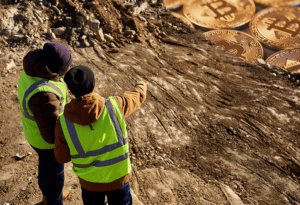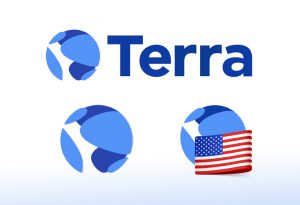
Table of Contents
ToggleI can venture to guess that this article will be read by three groups of people. Those who are researching how to mine USDC, those who know the answer and were surprised by the title, or those who do not know the answer but were not researching the topic either.
I will quickly cut this mysterious veil by clarifying that it is not possible to mine USDC. But if you want to know why it is not possible to mine USDC, how USDC works and what we mean when we talk about “mining a cryptocurrency”, follow me and I will explain everything.
What is USDC?
USDC is, simply put, a centralized stablecoin whose value is always one dollar. Now, what do I mean by this “simple” phrase? Let’s analyze it in parts.
What is a stablecoin?
In contrast to BTC or ETH, whose values depend on the market, in short, on the value at which users are willing to buy or sell them, stablecoins have a stable value.
In the case of USDC, its value is tied to the value of the US dollar, so a USDC will always tend to be worth one dollar. This stability comes from the control exercised over its issuance by its creators, whom we will meet in the next paragraph.
What is a centralized cryptocurrency?
This feature also distinguishes it from decentralized currencies such as BTC or ETH, and means that behind USDC there is a company that guarantees the backing of this value.
So, the company behind USDC, called Circle, is in charge of issuing this cryptocurrency and ensures that for every USDC issued, there is a US dollar to back up the value of its currency.
For the security of its users, certification reports, issued by the consulting firm Grant Thornton, on the reserve balances backing USDC, are available on a regular monthly basis.
These balances are comprised of cash and short-duration U.S. government bonds, convertible into U.S. dollars at any time.
Now, we know what USDC is all about, but what does it mean to mine a cryptocurrency?
What does it mean to mine a cryptocurrency?
Cryptocurrency mining is a concept that was born from bitcoin and its analogies with the precious metal we know as gold. It is not for nothing that bitcoin is said to be digital gold.
Continuing with the bitcoin example, mining BTC means nothing more than creating new BTC. Just like traditional miners who extract gold from the earth, bitcoin miners are in charge of extracting this cryptocurrency and putting it into circulation. The big difference lies in the process. Let’s get to know it.
How is a cryptocurrency mined?
Cryptocurrencies that can be mined are those coins native to a blockchain whose consensus for the creation and validation of new blocks is the famous and controversial Proof of Work.
Continuing with bitcoin, to validate a block in the Bitcoin network, miners are in charge of gathering the transactions they receive transmitted by the nodes of the network, grouping them into a block and solving a mathematical problem.
Whoever solves this mathematical problem, whose difficulty is self-adjusted to achieve a resolution time of 10 minutes, will be the one who “mines” the new Bitcoin block.
Among the transactions included in that block, the first will be a transaction to the miner’s own wallet, through which the reward for mining that block will be sent.
And what is that reward? Of course, bitcoins, to date 6.25 BTC. That way, the miner is creating or mining new bitcoins and we continue the race, until the total of 21 million BTC is mined.
Of course, we can change the name of bitcoin to another cryptocurrency from a POW network and by making some small differences, the process will be very similar.

Well, we already know what USDC is and what is mining a cryptocurrency, so now it’s our turn to delve into USDC, to know how it is created, what is its importance in the ecosystem it is part of.
Let us proceed without further ado, to unveil each of these points.
Why can’t USDC be mined?
As I explained above, “mineable” cryptocurrencies are those native to blockchains that govern their consensus by the Proof of Work method.
When we talk about USDC, we refer to a token created by the ERC-20 standard within the Ethereum network. Except for ETH, the rest of the coins circulating in the network are tokens of these characteristics that are created according to the method established in the Smart Contract that gave them life. You may wonder then…
How is a USDC created?
The Smart Contract that gave birth to USDC is controlled by its creator, Circle. Therefore, anyone who wants to issue USDC must contact this company and by complying with the legal requirements imposed by Circle, will be able to give life to new USDC units.
Once the above steps have been circumvented, the desired dollar amount should be sent to a given account, and the USDC smart contract will send the new USDC units to the Etheruem network wallet contributed by the “issuer”.
A less dynamic and entertaining process to explain than mining BTC, but effective nonetheless.
What is USDC’s place in the crypto ecosystem?
We need only take a look at the top ten cryptocurrencies in terms of market capitalization to see the importance of USDC.
As of today, it is ranked number 7, being the second largest stablecoin, only behind USDT from Tether, which has 46% more market capitalization.
However, an important point to note that differentiates the two largest cryptocurrencies is their transparency. While decentralization lovers will not be happy knowing that there are companies holding the reins of the two most important stablecoins in the ecosystem, the vast majority will undoubtedly prefer Circle’s stablecoin to Tether’s.
No reliable audits are known about the latter. On the other hand, Circle presents constant audits that attest to the real existence of the funds that support the value of USDC.
As of today, we have more than 42.5 trillion USDC issued, which circulate on various blockchains and can be found on all major exchanges.

The importance of stablecoins
I have sometimes been asked, and you may be asking right now, why buy a cryptocurrency that represents a dollar if I can have a dollar?
The question is valid and the answer is their usefulness. Undoubtedly stablecoins, thanks to their stability, attracted new users to the crypto world who were afraid of losing out due to the volatility of the most popular currencies.
Once these neophytes entered this world, with some peace of mind, they were able to start interacting with the DeFi ecosystem platforms and this is where these coins demonstrated their true potential.
We could probably answer the question of this section with another question: why buy something that loses value on a daily basis, the dollar, when we can have something that represents that value but allows us to invest it and obtain returns greater than that loss of value?
Today, no one would dare to argue that stablecoins played a fundamental role in the explosion that we have enjoyed in the last two years of the DeFi ecosystem and that they will undoubtedly continue to grow.
The future of USDC
The number of USDC circulating at the moment is 42.5 trillion, while the total USDT in circulation amounts to 78.2 trillion.
Although it is a big difference, a year ago we saw that USDC had a Market Cap of 4.2 billion versus UST’s 21.3 billion.
The numbers indicate that USDC’s growth and adoption in the year just ended were impressive and its ferocious expansion is far from stopping.
Beyond the discussion between centralized and decentralized stablecoins, within the first category, USDC clearly seems to have won its space as the most transparent.
Who knows, we may be starting the year in which USDC claims the stablecoin crown….








